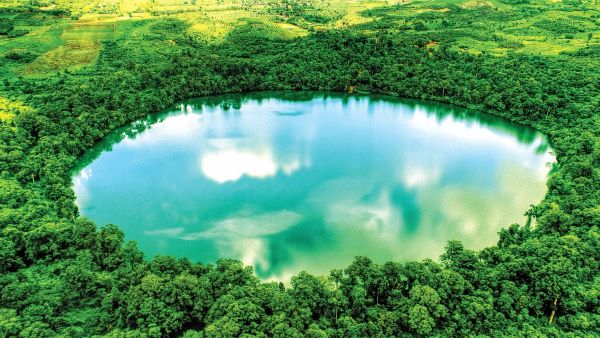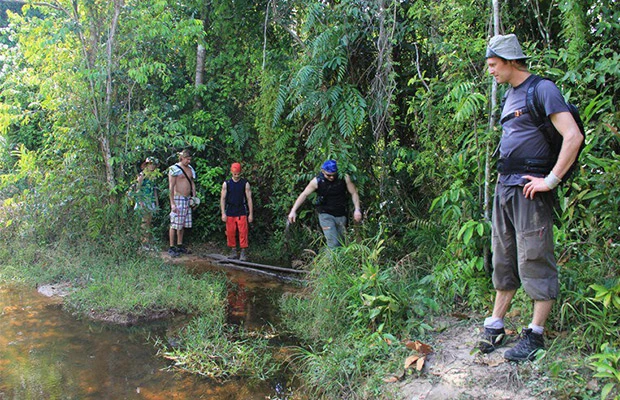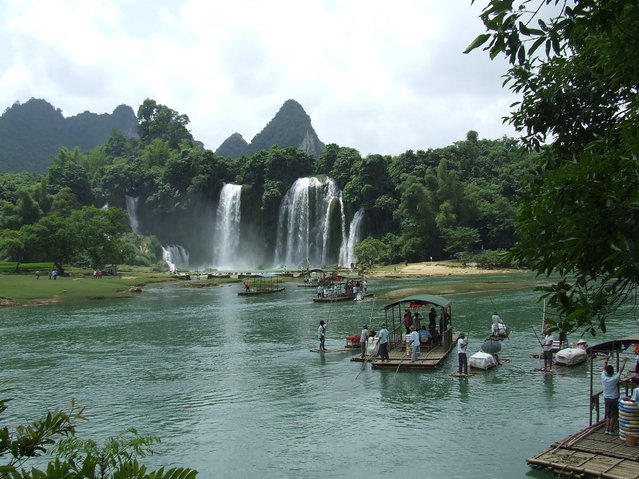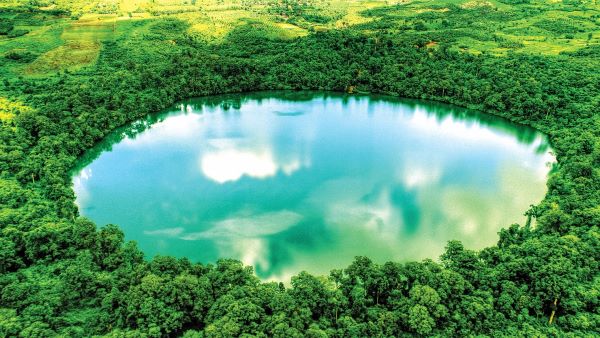Nestled in northeastern Cambodia, Ratanakiri is a province known for its rugged landscapes, rich indigenous culture, dense jungles, waterfalls, and unique volcanic lakes. It is one of the country’s most remote and beautiful destinations, offering travelers a chance to experience untouched nature, adventure tourism, and traditional ethnic minority communities.
1. Natural Wonders and Eco-Tourism
Yeak Laom Volcanic Lake
- One of the most famous attractions in Ratanakiri, Yeak Laom Lake, is a crystal-clear volcanic crater lake surrounded by dense rainforest.
- The lake is perfect for swimming, relaxing, and enjoying nature. There are wooden docks and picnic areas where visitors can unwind.
- The area is considered sacred by the local indigenous tribes, and visitors can learn about the spiritual significance of the lake.

Waterfalls
Ratanakiri is home to several stunning waterfalls, each offering a unique experience for adventure seekers.
- Ka Tieng Waterfall – A picturesque waterfall surrounded by jungle, offering a refreshing swimming spot.
- Cha Ong Waterfall – Known for its cave behind the falls, where visitors can walk behind the cascading water.
- Ou’Sean Lair Waterfall – Located in a more remote area, this waterfall is ideal for those looking for an off-the-beaten-path adventure.
Vast Jungle and Wildlife
- The province is part of the Virachey National Park, Cambodia’s largest protected area.
- This park is home to rare wildlife such as Asian elephants, gibbons, leopards, and exotic birds.
- Trekking and camping in Virachey National Park offer an immersive jungle experience with opportunities for wildlife spotting and cultural encounters with indigenous tribes.
2. Ethnic Diversity and Indigenous Culture
Ratanakiri is home to many indigenous minority groups, including the Kreung, Tampoun, Jarai, and Brao people. These ethnic communities have lived in the highlands for centuries and maintain their traditional customs, languages, and lifestyles.
Village Experiences
- Travelers can visit indigenous villages, where they can learn about traditional farming, spiritual beliefs, and unique stilt houses.
- The Kreung people, for example, build distinctive small huts for young couples to stay in before marriage.
- Handicrafts, textiles, and basket weaving are key cultural traditions, and visitors can purchase locally made souvenirs.
Traditional Ceremonies and Spiritual Practices
- Many indigenous groups practice animism, believing in spirits of nature and performing rituals for protection and prosperity.
- Some villages conduct ceremonial sacrifices and spiritual dances, which visitors may have the chance to witness during special occasions.
3. Adventure Activities in Ratanakiri
Trekking and Jungle Exploration
- Ratanakiri is one of the best places in Cambodia for multi-day jungle treks.
- Trekking tours often include visiting waterfalls, meeting local tribes, and exploring Virachey National Park.
- For experienced hikers, camping deep in the jungle offers a chance to see wildlife and untouched landscapes.

Elephant Encounters
- Unlike other parts of Cambodia where elephants are used for tourism, Ratanakiri promotes ethical elephant experiences.
- Visitors can observe elephants in their natural habitat while supporting conservation efforts.
River Adventures
- The Sesan River offers opportunities for kayaking, fishing, and boat rides.
- Travelers can explore the Sesan Rapids, which provide stunning river views and a peaceful escape into nature.
4. Banlung: The Gateway to Ratanakiri
Banlung, the provincial capital, serves as the starting point for most travelers exploring Ratanakiri. The town is small but has markets, guesthouses, and restaurants where visitors can enjoy local Khmer and indigenous dishes.
Banlung Market
- A great place to find fresh produce, local spices, and handmade crafts.
- The market is also a good spot to try traditional highland food, including wild mushrooms, forest honey, and grilled meats.
5. How to Get to Ratanakiri
- By Bus: Ratanakiri is accessible by bus or van from Phnom Penh (10-12 hours) and Siem Reap (8-10 hours).
- By Private Car: Hiring a private taxi is a faster but more expensive option.
- By Motorbike: Adventurous travelers sometimes rent motorbikes in nearby provinces like Kratie and ride to Ratanakiri for a thrilling road trip.

6. Why Visit Ratanakiri?
✔️ Explore breathtaking waterfalls, volcanic lakes, and dense jungles.
✔️ Immerse yourself in indigenous culture and traditional village life.
✔️ Experience eco-tourism in one of Cambodia’s most remote and untouched regions.
✔️ Enjoy adventure activities such as trekking, wildlife spotting, and river excursions.
✔️ Escape the crowds and discover one of Cambodia’s last true frontiers.
For travelers seeking wild nature, adventure, and cultural authenticity, Ratanakiri is a hidden gem that offers an unforgettable off-the-beaten-path experience in Cambodia.




